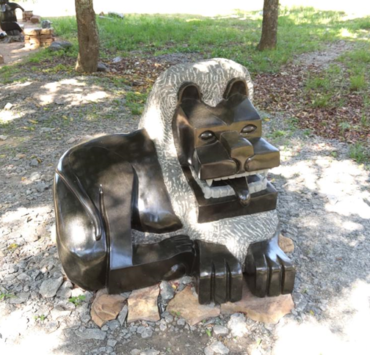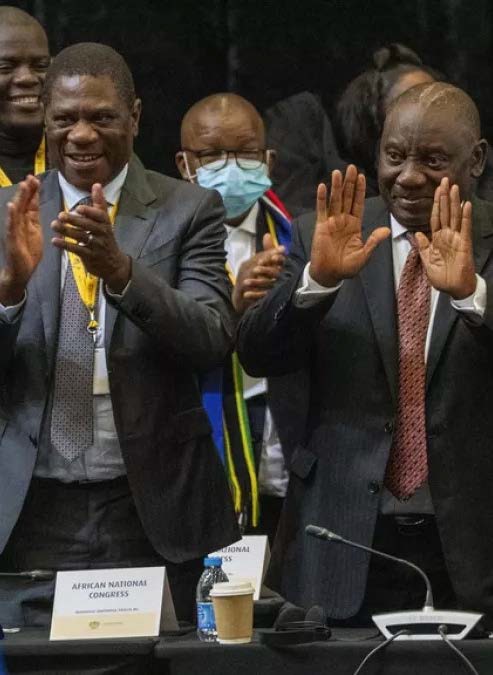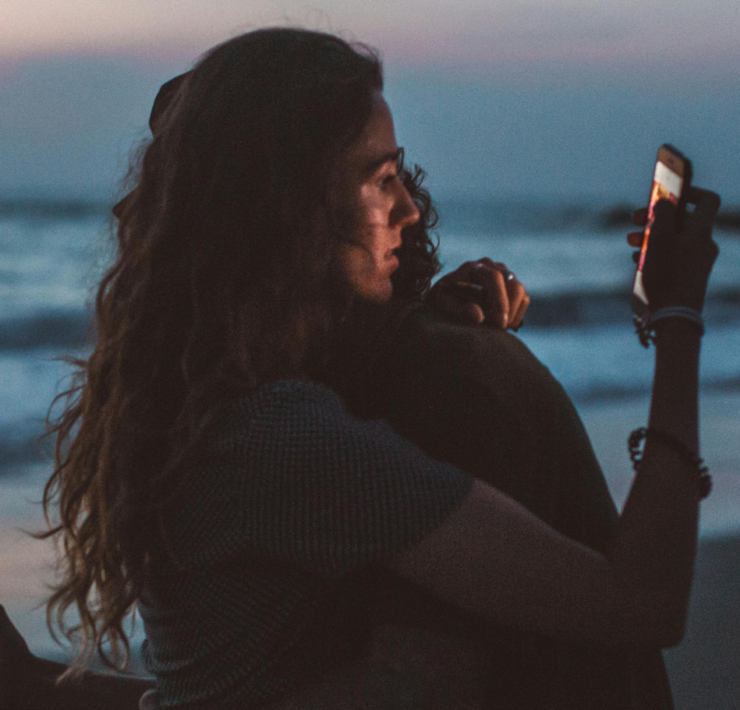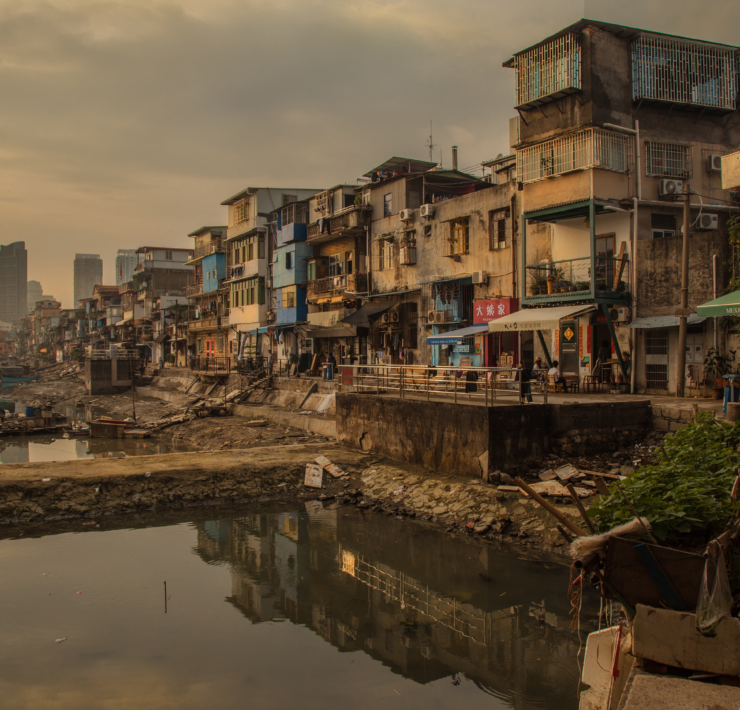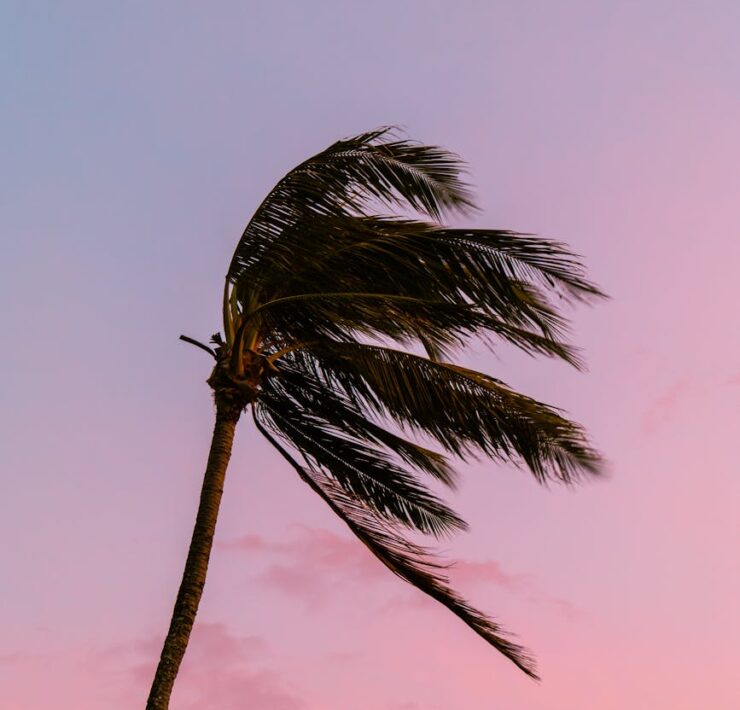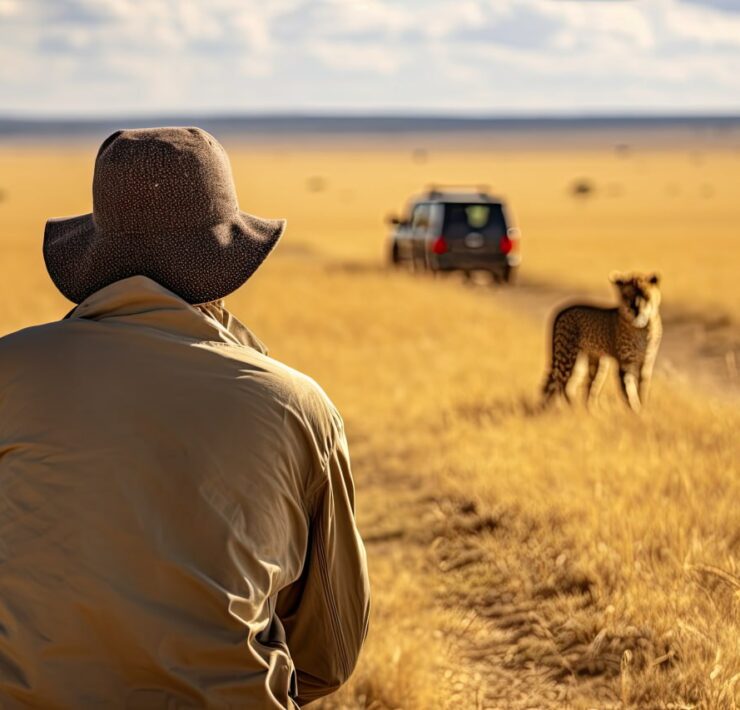Road trip: Diani Beach, the Kongo River, and Shimoni, the reminiscence of the slave trade
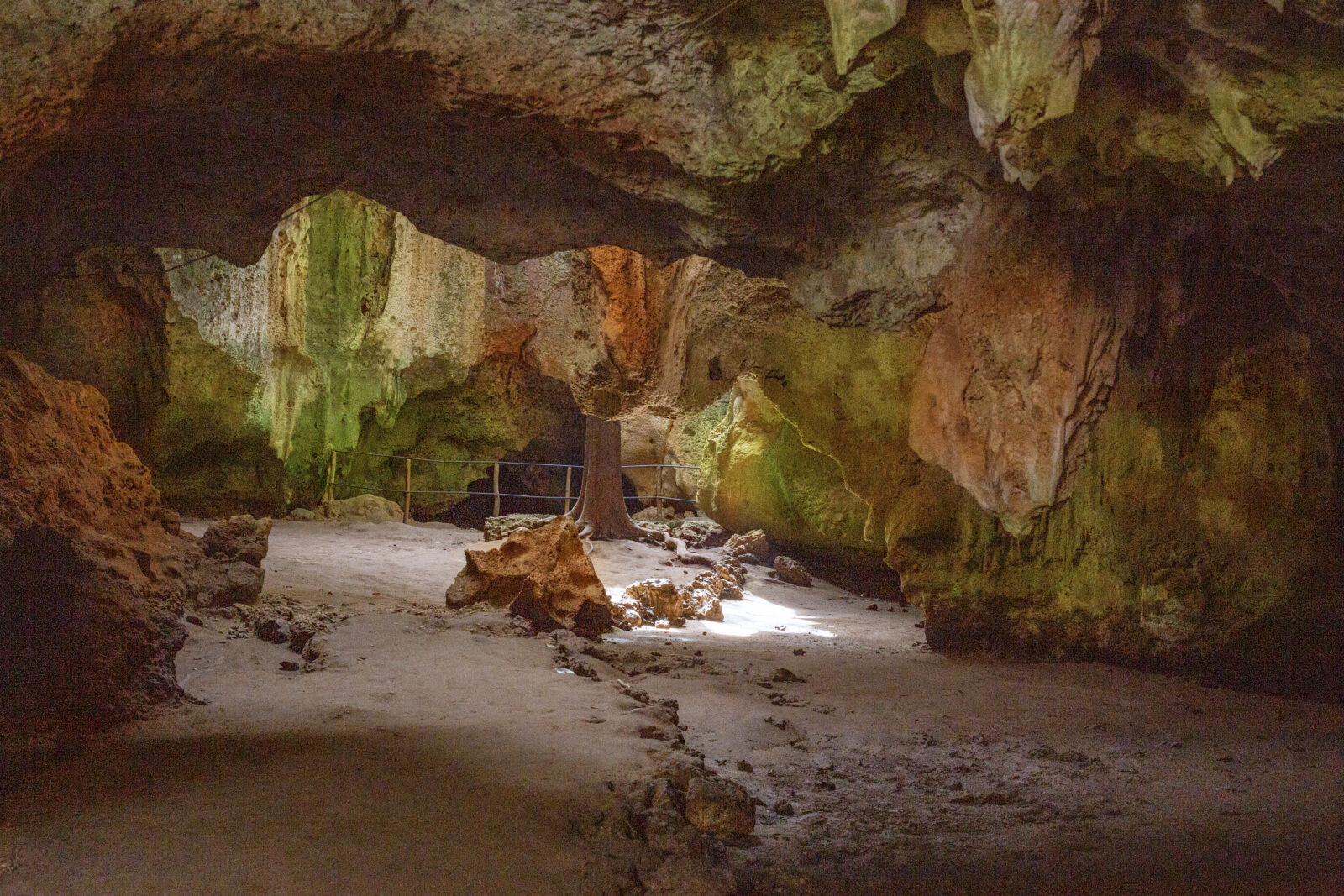
Samuel Phillips is a writer, graphic designer, photographer, songwriter, singer…
Recently, after my son’s one-year birthday celebration which was arranged for him by his gracious grandmother and aunt, we went on a quick road trip with some of our friends to Diani at Kenya’s south coast in Kwale County which borders Mombasa County and Tanzania. Having lived in Mombasa’s North Coast twice within the past several years and even continued to visit several times in between, I had always wanted to visit the South Coast. I had heard many good stories about the place but had never really had the opportunity to go. So, when the opportunity came to make the trip, it was a welcome one. I am not going to write much about the trip itself, but about the few new things I got to learn in South Coast.
When we arrived in Diani, quite late in the afternoon, and checked into the Airbnb apartment, nothing made more sense at that moment than to just lay on the bed and sleep.
Early the next morning, I went out with my camera for a walk at the Diani beach, hoping to get some sunrise photos. With photography, especially nature or landscape photography, you can never really tell what to expect.
This particular morning did not seem to encourage sunrise photos, for right at the very gateway of the sunrise I had gone for, was this huge dark cloud that seemed to be saying “Hey man! I’m not letting you take this photo today”. You really can’t contend with nature, so I just decided to walk the beach and see whatever else I could do that morning.
I was particularly intrigued by the huge number of massive baobab trees scattered all across the beachfront and on the sides. These massive old baobab trees created this beautiful shade of fineness that you could sit under for the whole day and not be tired of. It was so special.
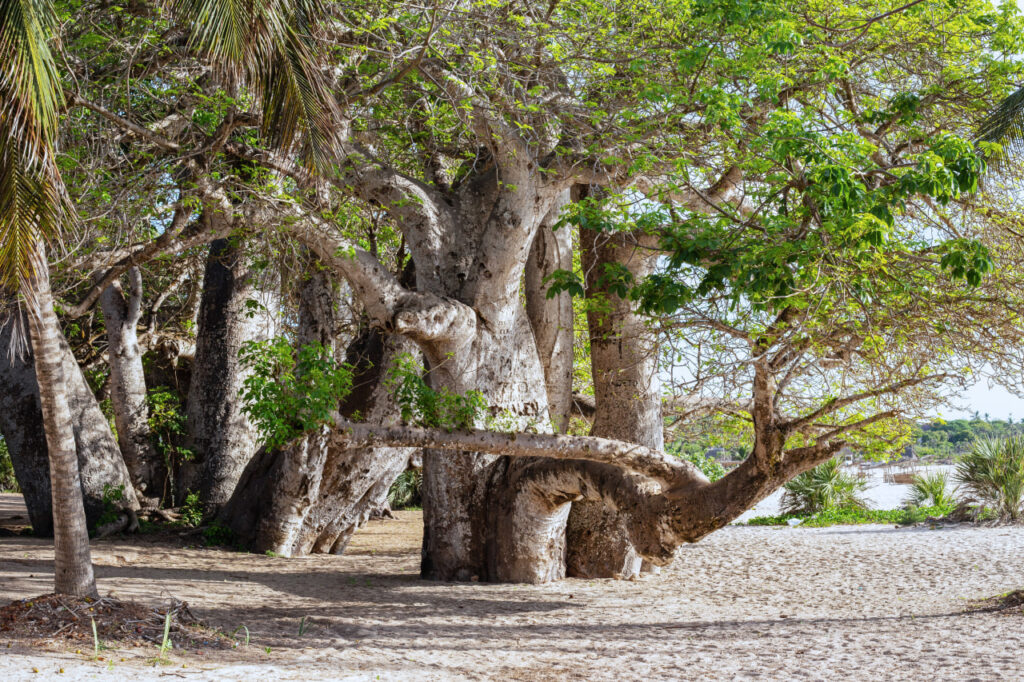
It was while I was walking around that I noticed a river that flows into the ocean right on the beach. Remembering that someone had mentioned the Kongo River when we arrived at the lodging the previous evening, I decided to just make some inquiries if the river I was seeing was the same as the Kongo River that was mentioned. I asked a guy around about the Kongo River and he confirmed it was the same river I was looking at.
Curious to know if the name “Kongo River” means that it is connected to the Congo DRC or if its water flows from central Africa or so, I asked a beach guide who gave me a quick tour of the area and mentioned a few things about how the name came about.
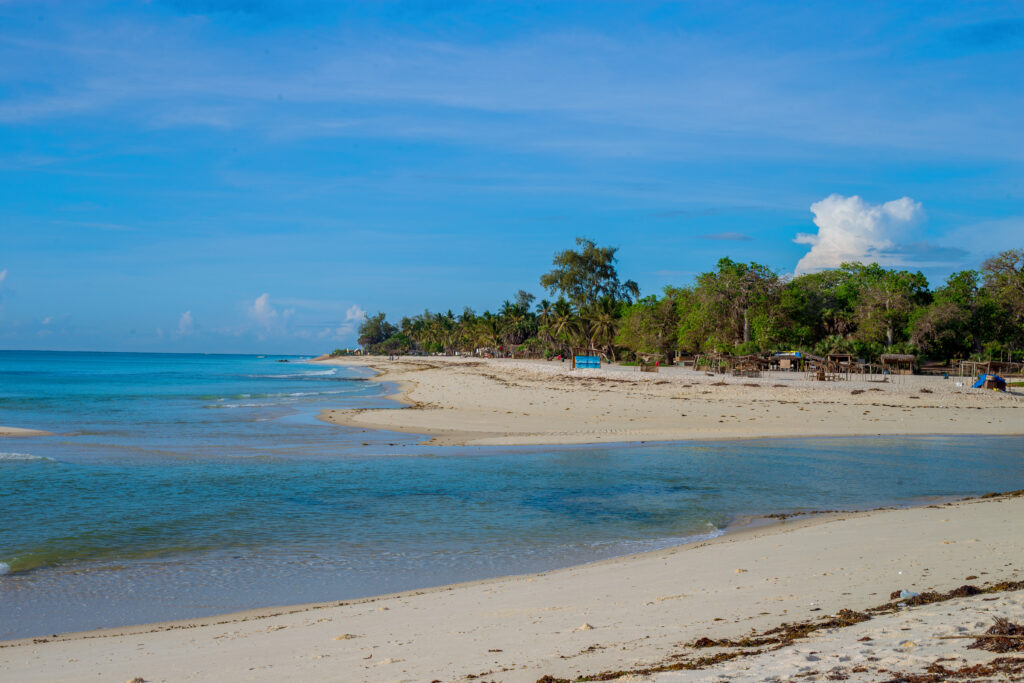
Named after an Imam who built the Kongo Mosque
Jamal (not his real name) took me around the baobab trees and took me to the old Kongo mosque hidden among them. He explained that even though not much record is available about the Kongo Mosque, it is, however, of public knowledge that the mosque was built in the 14th century by an Arab Imam called Imam Kongo. Imam Kongo, according to Jamal, was one of those Arab merchants that came to Africa (coast of Kenya) to trade in human cargo and other merchandise. The mosque, to these merchants, was the place of worship they would visit before they went inland to do their evil businesses. And that both the mosque and the river were named after Imam Kongo. I found all of what he said very interesting.
Jamal, being a Muslim himself, expressed a very deep dissatisfaction about the so-called business of the Arabs on the coast of Africa for which they built the mosque. He says “How can people build a mosque to pray and then go inland to carry out the evil of the slave trade?”. He didn’t look pleased at all.
I had wanted to go into the mosque to see what it looks like and also maybe take some photos, but Jamal advised against it. Non-Muslims are not allowed into the premises of mosques. I had to respect that. So, I just looked from the outside and took some photos of the exterior. Right outside the mosque are some scattered graves made of stones and corals. Jamal said they were the graves of merchants and those who built the mosque.
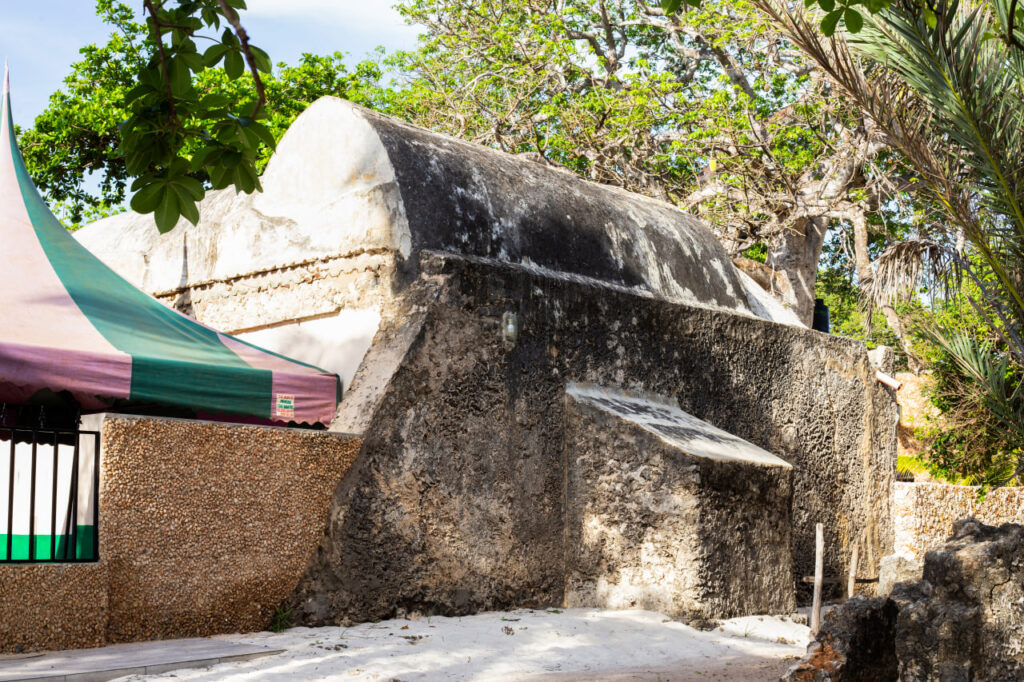
Jamal mentioned how that he did not fast for Ramadan because he has some health issues with his chest. He was dealing with Asthma. But I found that very unusual, for while he complained of Asthma, right between his right fingers was a burning cigarette, half-smoked. I told him to help himself by quitting smoking and then start on a natural medicine regimen and he would be fine. I will talk more about this issue at the end of this article.
I took a few more photos of the area, the Kongo River, walked down the beach for a long stretch and then went back to the lodge where we were staying.
Later that same day at about midday, we drove out to see a coastal community one hour from where we lodged. It was a beautiful drive along a well-maintained road with endless stretches of greeneries, palm trees, and even sugarcane plantations. The road itself actually leads to the borders of Tanzania and Kenya. We were taken by a young bubbly coastal tour guide named Hamza.
Hamza is a tour guide who is specialized in indigenous forest tours for those who want to interact with nature, especially the forest environment. In the course of our interactions with Hamza, he mentioned that he is from a coastal community where the worship of the Spirit of the Forest is still very much practiced as part of their culture. I found that very interesting, to say the least. But because of the limited time we had to get the things we came for done, I could not really engage him in real conversation about his culture. From his conversation about trees, plants, and forest life, you could tell he has a lot of knowledge of indigenous healing plants. In fact, he mentioned that when we want to come to learn about his culture and indigenous healing plants, we should let him know and he will show us things in his community. He even suggested that if we want to engage with his community elders who are the older custodians of such deep knowledge, he can arrange for that to happen. I found this part of our journey the most important of all because of the fact that we could actually go back to his community to learn about indigenous healing plants. For me, that is a gold vault about to open and definitely plan to visit again.
The Shimoni, meaning “the Place of the caves”
We did a quick visit to Shimoni town along the same east coast. Shimoni according to our guide is a Swahili word for “the place of the caves”. I had only heard the name Shimoni but had never visited. In fact, I had no clue the name had anything to do with the ignoble trade in humans. So, I was very surprised when we got to Shimoni and the relics of the slave trade were just staring me in the face. The caves of Shimoni are right opposite what was then the office of the slave traders but which is now a small museum. The building is a one-story building and is exactly the same structure as the slave office you will find in Badagry old slave port in Lagos, Nigeria.
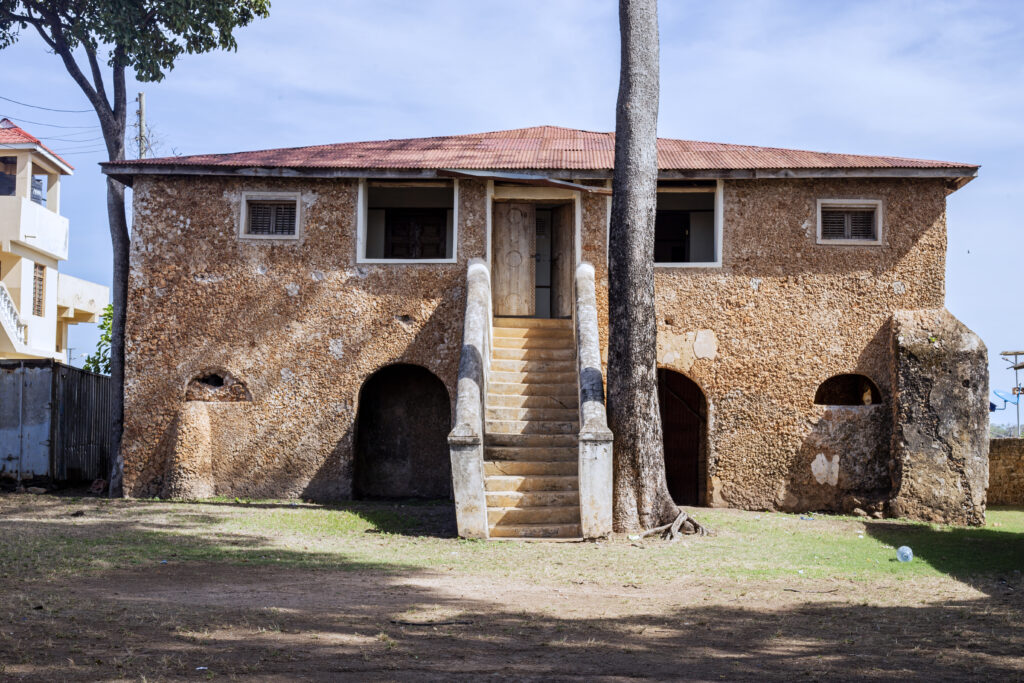
Sincerely speaking, going down the stone stairs into the dark caves below the surface did not evoke any form of emotions in me but it was rather artistic that such a place existed and was used for such evil as the slave trade. There were a few electric bulbs that lit the cave partially from different angles, but much is not lit. It was really dark. I tried to capture the moments with a phone but could not get much because I was really not prepared gear-wise, since I did not even have a pre-clue that we were visiting a dark cave. But what I got will be used for a video story.
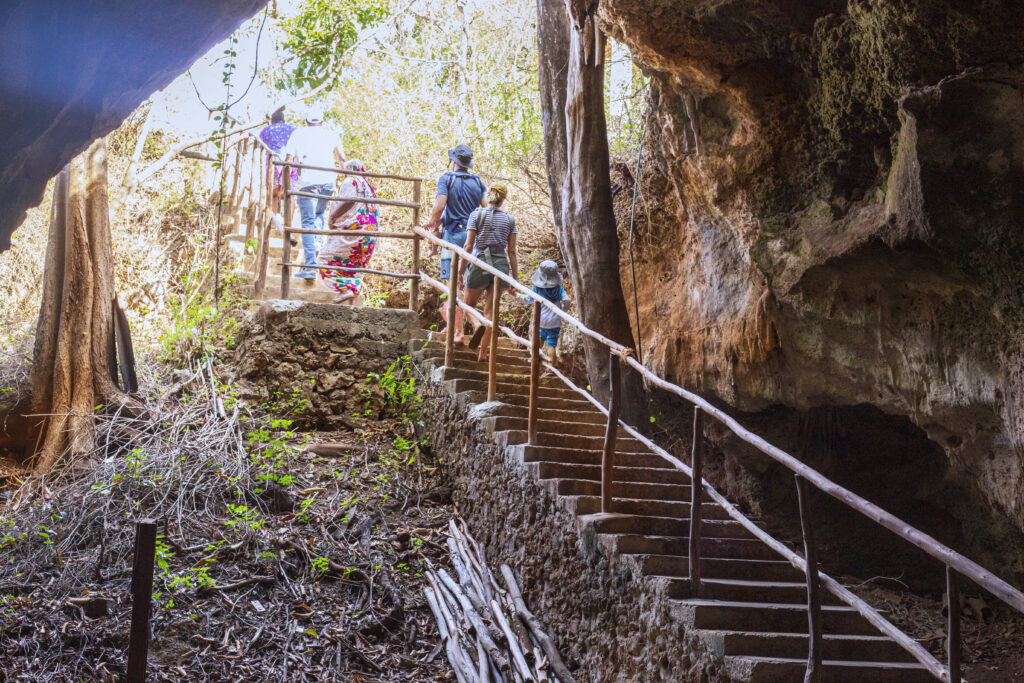
Our guide did quite a good story of what transpired in that cave, how Africans were captured by Arabs from the surrounding areas of the coast, bundled together in those dark underground caves for at least three weeks and then taken through the inner cave outlet into ships and transported to Zanzibar where the bigger slave markets were at the time. She showed us some chains on the wall of the cave which were used to shackle humans turned into slaves before they were shipped out. She mentioned that in the case of an unfortunate death of a “slave”, they are thrown into the ocean. On a lighter note, our guard mentioned that even though the slave caves were used for evil practice against fellow humans during the slave trade, it has now become a happy place used for generating funds through tourism, to fund dispensaries and other amenities for the Shimoni community.
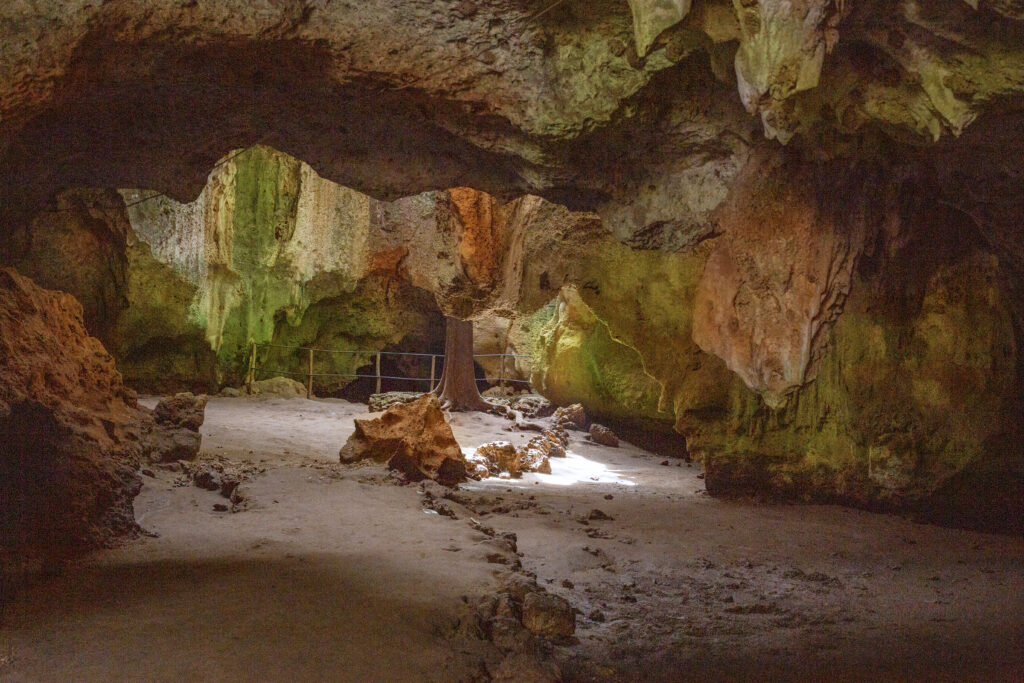
The cave smells horrible I must say. Initially, I had thought it was all part of the stench of human cargo that remained all these years until the guide told us that the stench actually comes from bats’ poop. There is a lot of them hanging on the roof of the caves. There is not one single ideology or philosophy or religious reason I found good enough for anyone to subject another human like themselves to such cruelty of slavery. None at all.
We took our leave and drove back to our lodge.
Here is my thought about the problem with Africa.
Or let me say, one of the problems with Africa.
Sometimes, it appears that Africa’s problems are too multilayered and very complex, which they are, but when one can narrow down all the multilayered aspects of the African problems, one begins to see quite a simple pattern of how and why Africa is where she is right now. I have written some articles on this matter before, so I will save myself the pain of having to do that all over again. But let me pull out one problem that I think is making a mess of Africa right now and that, is from my interaction with Jamal.
I find the narrative of Jamal’s health quite indicative of some of the problems in Africa. Not the fact that he has asthma, which is unfortunate and which I hope he gets help with, but the whole unconscious attitude towards the disease in relation to his smoking. Here is what I mean.
Jamal is angry that Arab slave merchants built a mosque where they would pray before going for their ignoble human trade inland. He complains that he could not fast during Ramadan because of his health issue. But Jamal has refused to tell himself that smoking and asthma are twin brothers-in-arms set to destroy him. He has refused to allow himself to think that asthma is most likely a consequence of his smoking and maybe his other lifestyle choices and thus should stop. So, technically, he blames everything and everyone else except himself. This ideology that everyone else is responsible for the so-called backwardness of Africa and not the choices, and decisions of Africans themselves; both leaders and the people, is nothing but shooting oneself in the foot. And we have been doing this foot shooting for a long time and we need to stop.
As Africans, many of the things we call problems and for which we have been held back for too long, actually have their solutions right in front of us. We just need to make decisions and choices that either help us put a stop to the root of the problem or that magnify the solution so that the problem stops being a problem. Take for instance in Kenya, there have been these ungodly demonstrations that the opposition party, Azimio, has been carrying out and which have been disturbing the economic activities wherever the demonstrations are carried out. One of the issues they keep hammering is the issue of high cost of living. And that mostly is the high cost of maize flour or Unga as it is called locally. It’s like when you mention the issue of the cost of Unga, some Kenyans just lose control of their minds and are ready to take to the streets and express how deeply unhappy they are with the current government of William Ruto. But the one thing most of these Unga-hyped-up demonstrators don’t put into consideration before going out there to disrupt the life of the nation is that the issue of the cost of living or the high cost of Unga is not new and also not just a Kenyan thing. It’s a global shortage of food. But here is an example of what really gets me upset and which I think is really self-foot-shooting among Africans. The fact that many Kenyans that I have interacted with for about six years and counting, have access to either their personal lands or family lands in their villages, or shags, as they call it. But many of them like to plant grass in their compounds instead of planting some basic vegetables and fruits. So, instead of pretending to be living the high life in Nairobi where the cost of food, housing, power and every other basic thing is more expensive, why not go work the land in your village, plant the food you need and cut short the high cost of living? That’s what I would do. The government cannot do everything and that means the people have choices they need to make to help themselves in the face of the current global shortage of food. Whether the global shortage of food is real or just another piece of propaganda. But in any case, make a choice. There is nothing wrong with Africa as a continent but until we as Africans start to look inward and make mind shifts towards how we want our lives to turn out, we will keep complaining and pointing fingers at others while making no effort to make required changes.
What's Your Reaction?
Samuel Phillips is a writer, graphic designer, photographer, songwriter, singer and a lover of God. As an Afrikan content creator, he is passionate about creating a better image and positive narrative about Afrika and Afrikans. He is a true Afrikan who believes that the true potential of Afrika and Afrikans can manifest through God and accurate collaborations between Afrikans. Afrika is the land of kings, emperors, original wisdom, ancient civilizations, great men and women and not some road-side-aid-begging poor third world continent that the world finds joy in undermining.









